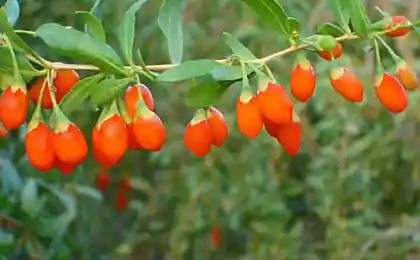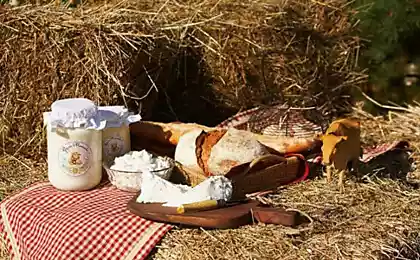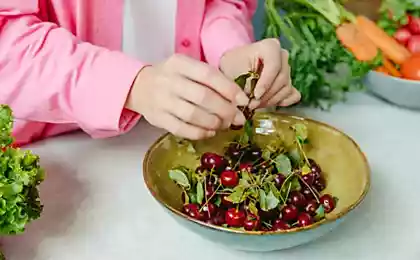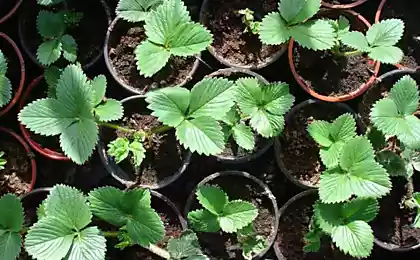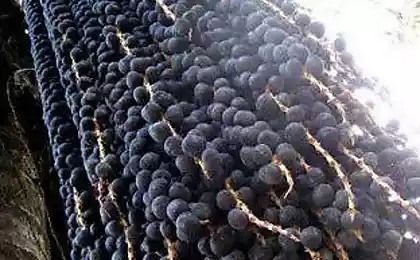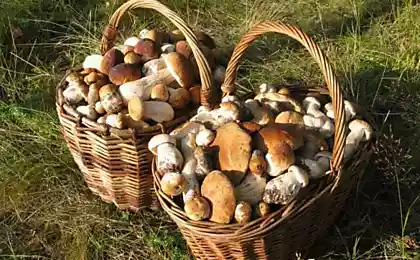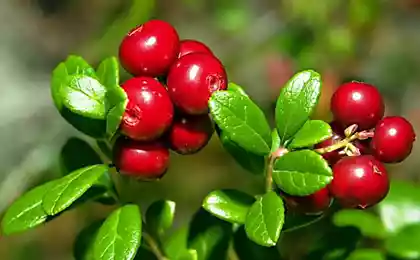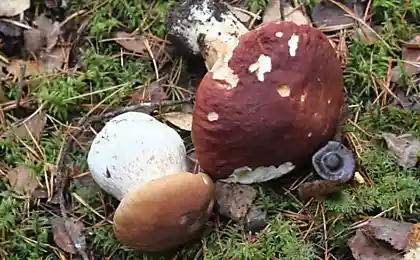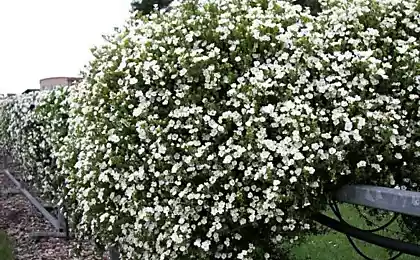253
How to grow goji berries in your area
Recently, unusual goji berries have become fashionable. Someone says that it is 100% a remedy for weight loss. Others believe that these miraculous berries are a storehouse of useful and vital microelements. In this article, we will learn not only about what is so useful and valuable this plant, but also about how to grow goji berries at your dacha.
Mysterious goji berries in Russian and scientifically called “deresa”. In fact, only the fruits of Chinese deresa can be considered goji berries.Lycium chinense,Or the barbaric (or ordinary)Lycium barbarum. In the people, deresa is also called wolf berry (but this name is a number of different plants, including non-poisonous, like deresa), zamanich. The name “Tibetan barberry” is often heard, but deresa and barberry.Bérberis- completely different plants from different families - do not confuse! You can slip barberry seedlings under the guise of goji. The name "Goji"Goji?came to English from Chinese dialects - so called in China dereza.
Dereza Chinese is native to the Ningxia Hui Autonomous Region on the eastern edge of the Tibetan Plateau, in northwestern China. It was she who gave rise to so many legends and rumors about monks-long-lived.
Common wood is almost not inferior to the commodity in properties, but its distribution area is wider - you can find this berry in the east and center of China, throughout Southeast Asia, and we too: in Central Asia, Kuban, Primorye, the Caucasus, Ukraine, in the middle strip of Russia.
Dereza belongs to the nightshade family, it is a deciduous shrub reaching a 3-meter height, with hung thorny branches and small leaves. The crown can reach up to 6 m in diameter. The root system is powerful with deep strong roots forming many root offspring.
The plant, if it is cultivated, is quite decorative: branches of a pleasant light yellow color, the color of the leaves is light green on top, and from below it is sizzled.
Color will start in June and will please the eye until October. Pink, purple, sometimes even brown-purple flowers have a mild pleasant smell.
Berries of oblong shape, orange, scarlet-red color up to 2 cm long, as the placer envelops the escape. Fruit will begin from 3 years after planting, sometimes earlier.
Goji breeding
vegetativelyYou can multiply semi-timber cuttings about 10 cm long, but you should make sure that there is old wood on the shoot. To do this, wet part of the cut with a root and in July-August plant in a greenhouse or under film. When multiplying with wood cuttings, it takes root faster. You can root in a cool place or a cool, but insulated balcony from autumn to the end of winter.
In the Caucasus, derese is often propagated by self-seeding.
Goji planting
For deregions, the soil reaction can be slightly acid-strong alkaline, but in principle it can grow on any soil composition. For planting, preference should be given to sunny places. Dereza doesn't like water stagnation. The best time to land is spring. In autumn, goji is rarely planted, it is akin to extreme gardening, because it can often freeze in winter. But there are also favorable outcomes for autumn landing in warmer regions. The tests were carried out at the breeding grounds of St. Petersburg. With shelter in the cold winter, it froze to the level of the root neck or to the end of the snow cover. It can tolerate cold up to -15 ° C. Many sources (German nurseries) say that even up to -25 ° C, but in the middle lane it is extremely risky. In the south of Russia can winter without shelter.
Under the goji seedling, we prepare a pit 50-60 cm wide and about 40 cm deep. Pits for several plants are located at a distance of 1.5-2 meters from each other. In the ground for filling, add 150-200 g of superphosphate, 8-10 kg of compost (humus, peat), 30-40 g of potassium sulfuric acid or wood ash and mix thoroughly. The saplings need to be cut a little. After planting, properly water and mulch with peat or humus.
Goji care
watering: You can water the woodwork only after planting and even no more than 2 times a week, depending on the aridity of summer.
FeedingThe tree grows even on poor soils, but the best quality of the fruit is observed on soils with average fertility. You can feed young plants during the growing season, further in fertilizing does not need.
PruningGoji tolerates haircuts and trimmings well. New shoots will grow from old wood. In decorative gardening, haircuts are well tolerated even with special mechanical devices.
Winter shelter:In winter, goji can freeze to be sure to be safe, many gardeners plant the plant in deep containers and store it in basements until spring. But there are also gardeners in whom the deresa does not freeze and covered only with lapberry and snow winters until spring.
The healing properties of goji berries
Goji berries are believed to contain vitamin C, many different minerals and polysaccharides, B vitamins, and essential fatty acids. In addition, they contain a huge amount of protein, thereby overtaking even grain crops. A decoction of goji berries tones the body, possibly due to its tonic properties in combination with proteins, in Chinese folk medicine is used as a strong natural aphrodisiac. Scientific studies have indeed confirmed an increase in testosterone in the blood. Because of its high content of zinc and iron, it is often used for anemia. In combination with other herbs can be used as a remedy for chronic fatigue and increased immunity. Useful as a means of combating hypertension. In modern medicine, the antitumor properties of goji are not confirmed. But it is scientifically proven that a special polysaccharide is isolated from the ordinary deresis, which helps in the initial stages of diabetes.
What parts of the plant should be used?
1. Goji berriesThey are usually used in dried form. Do not collect berries with your bare hands, as fresh juice of deresa berries can irritate the skin (for example, as the juice of fresh pineapple). Better spread the cloth under the bush and knock the berries off the branches. Fruits should be collected when they become bright red and have reached full ripeness. Unripe fresh berries can be poisoned. No wonder one of their names is a wolf berry.
First you need to dry the berries, then separate from the peduncle. In order for the raw materials to acquire medicinal properties, the berries must be dried until the skin begins to peel off. You can dry only naturally, without the use of ovens and preservatives.
2. Goji root bark.It is used for coughing, fever, lowers blood cholesterol, and is also used as a diuretic and laxative. To obtain raw materials, it is necessary to dig the roots, wash, remove the bark and dry well in the sun. Then make bark decoctions.
3.Goji leaves They make invigorating teas.
Keep in mind that the Russian body, unlike the Chinese or Tibetans, is not characterized by a large consumption of goji berries. Our body is not able to immediately adapt to the high consumption of fruits and other parts of this plant. In this regard, those who are very fond of deresia may have kidney problems and severe dehydration.
The most famous in our time decorative variety "New Big" (NEW BIG) - the brainchild of Polish selection. The fruits are round, large and sweet. Beautiful honey plant and has good resistance to urban conditions (wind, heat, smoke).
The other two varieties suitable for cultivation in the middle lane are Goji Lhasa and Chinese Goji Lyciet. "Chinese Goji" has a high yield, medium ripe. "Goji Lhasa" begins to bear fruit early - already in the second year after planting, unlike other varieties that yield crops in the 3-4th year. This is an early ripe variety with large berries.
Today, many hybrid varieties are also sold (the signs of which are mostly transmitted only through vegetative reproduction, and not through seeds), for example, "NR1 Lifeberry" - frost-resistant and resistant to diseases and pests.
Source: www.7dach.ru
Mysterious goji berries in Russian and scientifically called “deresa”. In fact, only the fruits of Chinese deresa can be considered goji berries.Lycium chinense,Or the barbaric (or ordinary)Lycium barbarum. In the people, deresa is also called wolf berry (but this name is a number of different plants, including non-poisonous, like deresa), zamanich. The name “Tibetan barberry” is often heard, but deresa and barberry.Bérberis- completely different plants from different families - do not confuse! You can slip barberry seedlings under the guise of goji. The name "Goji"Goji?came to English from Chinese dialects - so called in China dereza.
Dereza Chinese is native to the Ningxia Hui Autonomous Region on the eastern edge of the Tibetan Plateau, in northwestern China. It was she who gave rise to so many legends and rumors about monks-long-lived.
Common wood is almost not inferior to the commodity in properties, but its distribution area is wider - you can find this berry in the east and center of China, throughout Southeast Asia, and we too: in Central Asia, Kuban, Primorye, the Caucasus, Ukraine, in the middle strip of Russia.
Dereza belongs to the nightshade family, it is a deciduous shrub reaching a 3-meter height, with hung thorny branches and small leaves. The crown can reach up to 6 m in diameter. The root system is powerful with deep strong roots forming many root offspring.
The plant, if it is cultivated, is quite decorative: branches of a pleasant light yellow color, the color of the leaves is light green on top, and from below it is sizzled.
Color will start in June and will please the eye until October. Pink, purple, sometimes even brown-purple flowers have a mild pleasant smell.
Berries of oblong shape, orange, scarlet-red color up to 2 cm long, as the placer envelops the escape. Fruit will begin from 3 years after planting, sometimes earlier.
Goji breeding
- seed- reproduces well with seeds. In the greenhouse without stratification sow in the spring and leave for the winter. When the seedlings begin to grow, the top of the escape is pinched to thicken the bush.
vegetativelyYou can multiply semi-timber cuttings about 10 cm long, but you should make sure that there is old wood on the shoot. To do this, wet part of the cut with a root and in July-August plant in a greenhouse or under film. When multiplying with wood cuttings, it takes root faster. You can root in a cool place or a cool, but insulated balcony from autumn to the end of winter.
In the Caucasus, derese is often propagated by self-seeding.
Goji planting
For deregions, the soil reaction can be slightly acid-strong alkaline, but in principle it can grow on any soil composition. For planting, preference should be given to sunny places. Dereza doesn't like water stagnation. The best time to land is spring. In autumn, goji is rarely planted, it is akin to extreme gardening, because it can often freeze in winter. But there are also favorable outcomes for autumn landing in warmer regions. The tests were carried out at the breeding grounds of St. Petersburg. With shelter in the cold winter, it froze to the level of the root neck or to the end of the snow cover. It can tolerate cold up to -15 ° C. Many sources (German nurseries) say that even up to -25 ° C, but in the middle lane it is extremely risky. In the south of Russia can winter without shelter.
Under the goji seedling, we prepare a pit 50-60 cm wide and about 40 cm deep. Pits for several plants are located at a distance of 1.5-2 meters from each other. In the ground for filling, add 150-200 g of superphosphate, 8-10 kg of compost (humus, peat), 30-40 g of potassium sulfuric acid or wood ash and mix thoroughly. The saplings need to be cut a little. After planting, properly water and mulch with peat or humus.
Goji care
watering: You can water the woodwork only after planting and even no more than 2 times a week, depending on the aridity of summer.
FeedingThe tree grows even on poor soils, but the best quality of the fruit is observed on soils with average fertility. You can feed young plants during the growing season, further in fertilizing does not need.
PruningGoji tolerates haircuts and trimmings well. New shoots will grow from old wood. In decorative gardening, haircuts are well tolerated even with special mechanical devices.
Winter shelter:In winter, goji can freeze to be sure to be safe, many gardeners plant the plant in deep containers and store it in basements until spring. But there are also gardeners in whom the deresa does not freeze and covered only with lapberry and snow winters until spring.
The healing properties of goji berries
Goji berries are believed to contain vitamin C, many different minerals and polysaccharides, B vitamins, and essential fatty acids. In addition, they contain a huge amount of protein, thereby overtaking even grain crops. A decoction of goji berries tones the body, possibly due to its tonic properties in combination with proteins, in Chinese folk medicine is used as a strong natural aphrodisiac. Scientific studies have indeed confirmed an increase in testosterone in the blood. Because of its high content of zinc and iron, it is often used for anemia. In combination with other herbs can be used as a remedy for chronic fatigue and increased immunity. Useful as a means of combating hypertension. In modern medicine, the antitumor properties of goji are not confirmed. But it is scientifically proven that a special polysaccharide is isolated from the ordinary deresis, which helps in the initial stages of diabetes.
What parts of the plant should be used?
1. Goji berriesThey are usually used in dried form. Do not collect berries with your bare hands, as fresh juice of deresa berries can irritate the skin (for example, as the juice of fresh pineapple). Better spread the cloth under the bush and knock the berries off the branches. Fruits should be collected when they become bright red and have reached full ripeness. Unripe fresh berries can be poisoned. No wonder one of their names is a wolf berry.
First you need to dry the berries, then separate from the peduncle. In order for the raw materials to acquire medicinal properties, the berries must be dried until the skin begins to peel off. You can dry only naturally, without the use of ovens and preservatives.
2. Goji root bark.It is used for coughing, fever, lowers blood cholesterol, and is also used as a diuretic and laxative. To obtain raw materials, it is necessary to dig the roots, wash, remove the bark and dry well in the sun. Then make bark decoctions.
3.Goji leaves They make invigorating teas.
Keep in mind that the Russian body, unlike the Chinese or Tibetans, is not characterized by a large consumption of goji berries. Our body is not able to immediately adapt to the high consumption of fruits and other parts of this plant. In this regard, those who are very fond of deresia may have kidney problems and severe dehydration.
The most famous in our time decorative variety "New Big" (NEW BIG) - the brainchild of Polish selection. The fruits are round, large and sweet. Beautiful honey plant and has good resistance to urban conditions (wind, heat, smoke).
The other two varieties suitable for cultivation in the middle lane are Goji Lhasa and Chinese Goji Lyciet. "Chinese Goji" has a high yield, medium ripe. "Goji Lhasa" begins to bear fruit early - already in the second year after planting, unlike other varieties that yield crops in the 3-4th year. This is an early ripe variety with large berries.
Today, many hybrid varieties are also sold (the signs of which are mostly transmitted only through vegetative reproduction, and not through seeds), for example, "NR1 Lifeberry" - frost-resistant and resistant to diseases and pests.
Source: www.7dach.ru


